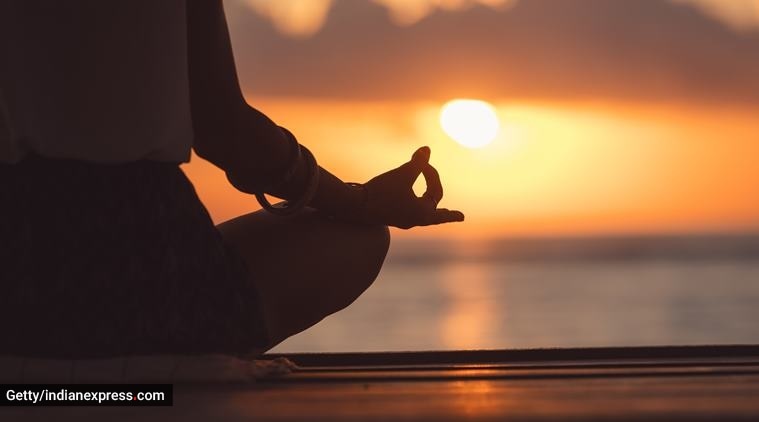More than ever before, the pandemic has highlighted the importance of physical, mental, and emotional well-being. The practice of yoga is one of the most powerful ways to enhance holistic well-being

By Nikita Singh
Yoga, a 5,000-year-old Indian body of knowledge was brought afresh into international consciousness with the commemoration of International Yoga Day, observed on June 21 annually, six years ago. At no point has it had stronger relevance as in Covid times to heal a traumatised world. On the occasion, here are some thoughts and action items on how one can leverage the science of yoga to enhance mental health and overall well-being.
It would not be wrong to say that there is perhaps an underlying misconception that yoga is all about a set of postures practiced at regular intervals. This, however, does no justice to yoga; in fact, trivialises it. Hence, it is essential to understand yoga and its impact on daily life.
What is yoga?
Derived from the Sanskrit word ‘yuj’ which means ‘to unite’, yoga is about the union of the body with the mind and the breath through postures (asanas), breathing techniques (pranayama), knowledge and wisdom as well as meditation.
While all the stretching, twisting, and balancing is undoubtedly beneficial and makes the body stronger, healthier, and more vibrant, asana is just one of the eight limbs of yoga, which also includes yamas, niyamas, pranayama, pratyahara, dharana, dhyana, and samadhi. These eight limbs of yoga should not be viewed as discreet from one another – they are neither separable, not dispensable.
Yamas and niyamas signify social ethics and personal practices respectively and can be applied every moment of our lives — when we are ‘on the yoga mat’, and even when we are ‘off it’ in everyday situations. For instance, client meetings, managing conflict, challenging decisions or deepening one’s own self-awareness.
Whilst there are five yamas and niyamas each, here are the four that each one of us can consciously begin to practice, particularly in today’s times.

Yama: Ahimsa (non-violence)
Often, we think of ahimsa as restraining from physical violence. However, it is also the practice of nonviolence in speech and thought. Also, it isn’t only about practicing ‘non-violence’ towards others, but also towards oneself. Practice implies something that takes commitment, a lot of work and quality time. For instance, telling ourselves, “Of course I shouldn’t get upset if I don’t get my way” or “I shouldn’t get into an argument”. Simple as this sounds, it is probably the hardest to achieve. This is where ‘on the mat’ postures and breathwork help us cultivate the mindset.
Niyama: Santosha (contentment)
The word santosha is divided into two parts: ‘sam’, meaning completely or entirely, and ‘tosha’, meaning acceptance or contentment. Together they mean complete contentment. Santosha can be a difficult concept, particularly if one often has negative thoughts like “I’m not good enough,” or “others always achieve more than me”. It is hard to see the goodness in yourself or others or enjoy fleeting moments of contentment when you’re expending a lot of mental energy knocking yourself down. This is where remembering that everything is impermanent helps. Unhappy feelings fade, and so do happy ones. Everything moves in an ebb and flow, the constant and rhythmic movement of time.
Niyama: Tapas (forbearance or discipline)
The word tapas is derived from the root Sanskrit verb ‘tap’ which means ‘to burn’, and evokes a sense of ‘discipline’. Therefore, tapas can mean cultivating a sense of self-discipline, forbearance, and courage in order to ‘burn’ away ‘impurities’ physically, mentally and emotionally, and paving the way to the light and positive qualities that are within each one of us. Tapas encourages us to try again, to build strength and learn the lesson that life is trying to teach. If we normally back away from hardship, tapas is there to encourage us to rise up and meet hardship with love.
Niyama: Svadhyay (study of self)
The word is made up of ‘sva’, meaning self or the human soul, and ‘adhyaya’, meaning lesson. In our everyday world, svadhyay can be considered as a deep practice of self-reflection. A challenge on the path of yoga is how to integrate the yamas and niyamas into our life with ease. But having these as goals keeps the enthusiasm of svadhyaya alive. Practices like journaling or a few minutes of meditation help us practise it.
Now, ask yourself:
Ahimsa: What is the shift that the practice of ahimsa can bring to my state of mind?
Santosha: When was the last time I experienced discontentment and how did this impact my behaviour and/or health? What is the one way in which I can consciously begin to practice contentment?
Tapas: One area in my life where I have practiced tapas or discipline/forbearance? How has this helped me?
Svadhyay: What are my strengths – areas I’d like to nurture? And which is the one behaviour I would like to develop?
The secret lies in the everyday practice of yoga asanas, breath work and meditation, also known as, ‘on the mat’ yoga practices! Regular practice necessarily translates into ‘off the mat’ life skill enhancement in two significant ways:
Eliminates duality: Maharshi Patanjali, the architect of the Patanjali Yoga Sutras, describes the benefit of asanas as that which removes the duality from our life. Our mind swings up and down. Sometimes we are excited, at other times, we put ourselves down. This is called dwandwa or duality. An asana is that which enables us to maintain equanimity. Reduction of the experience of dualities makes it easier for us to practice yamas and niyamas.
Eliminates stress, uncovering the positive qualities within: Think of asanas, pranayama and meditation as techniques to remove the veil that hides the goodness within us. Each one of us has had days when we’ve been ‘at our best’. It is possible to have such days every day through the regular practice of yoga ‘on the mat.’ As we eliminate stress, yamas and niyamas become an integral part of who we are.
The practice of yoga is one of the most powerful ways to enhance our holistic well-being. When we practice asanas/pranayama in combination with the disciplines of yamas and niyamas, we achieve what Maharshi Patanjali has termed “Heyam Dukham Anagatam” – which means the practice of yoga helps us not just to alleviate pain today, but avoid the pain that could potentially come in the future.
(The author is an organisational psychologist and leadership coach, certified quality council of India Yoga teacher, certified wellness coach, http://www.nikitasingh.org)
Source: Read Full Article



